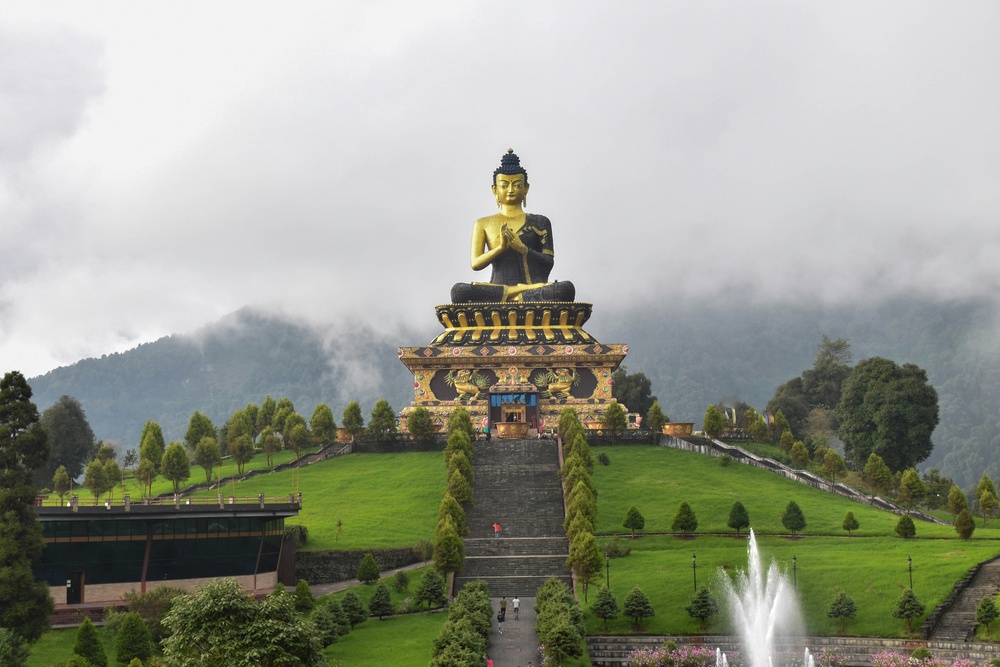A Complete Guide to the Most Popular National Parks in Sikkim
Nestled in the heart of the Eastern Himalayas, Sikkim is a land of extraordinary natural beauty and rich biodiversity. Despite being one of the smallest states in India, Sikkim’s geographical diversity—ranging from subtropical lowlands to high alpine landscapes—makes it a haven for wildlife and nature lovers. The most popular national parks in Sikkim not only serve as vital conservation zones but also offer travelers an opportunity to immerse themselves in serene forests, exotic flora and fauna, and breathtaking views of the Himalayan peaks.
Here’s a complete guide to exploring the most famous and biologically significant national parks and sanctuaries in Sikkim.
1. Khangchendzonga National Park
Location: North and West Sikkim
Area: 1,784 sq. km
Best Time to Visit: March to May, September to November
Overview:
Designated as a UNESCO World Heritage Site, Khangchendzonga National Park is the most well-known protected area in Sikkim. Named after Mount Khangchendzonga—the third highest peak in the world—this park is an ecological and cultural treasure. It features snow-capped peaks, deep valleys, glaciers, alpine meadows, and sacred lakes.
Wildlife Highlights:
Snow leopards, red pandas, Himalayan black bears, musk deer, blue sheep, Tibetan wolves.
Activities:
- Trekking routes like Goecha La and Dzongri
- Birdwatching (blood pheasant, Himalayan monal)
- Cultural exploration of sacred sites
2. Fambong Lho Wildlife Sanctuary
Location: East Sikkim (near Gangtok)
Area: 51.76 sq. km
Best Time to Visit: April to June, October to December
Overview:
Just a short drive from Gangtok, Fambong Lho Wildlife Sanctuary is a hidden gem rich in flora and fauna. It’s part of the larger Khangchendzonga Biosphere Reserve and offers beautiful forests of oak, bamboo, and rhododendron.
Wildlife Highlights:
Red pandas, Himalayan brown bears, martens, civets, various bird and butterfly species.
Activities:
- Nature walks and hiking trails
- Birdwatching
- Camping and eco-tourism
3. Maenam Wildlife Sanctuary
Location: South Sikkim (above Ravangla)
Area: 35 sq. km
Best Time to Visit: March to May, October to November
Overview:
Situated at elevations between 2,300 and 3,200 meters, Maenam Wildlife Sanctuary is known as the “medicine mountain” for its rich collection of medicinal plants and herbs. It is also a spiritual destination with views of Mount Khangchendzonga and the Teesta River valley.
Wildlife Highlights:
Red pandas, Himalayan serow, goral, common langur, blood pheasants.
Activities:
- Trekking to Maenam Peak and Bhaley Dunga
- Herbal and eco-education walks
- Panoramic viewpoints
4. Kitam Bird Sanctuary
Location: South Sikkim (near Namchi)
Area: 6 sq. km
Best Time to Visit: October to April
Overview:
Kitam Bird Sanctuary is one of the only designated bird sanctuaries in Sikkim and a paradise for birdwatchers. With altitudes ranging from 1,200 to 1,700 meters, this sanctuary boasts subtropical forests and rich avian diversity.
Wildlife Highlights:
Over 200 species of birds including Great Barbet, Green Magpie, Scarlet Minivet, and various woodpeckers.
Activities:
- Birdwatching and photography
- Guided nature trails
- Butterfly spotting
5. Barsey Rhododendron Sanctuary
Location: West Sikkim (Singalila Range)
Area: 104 sq. km
Best Time to Visit: March to May
Overview:
Famous for its vibrant rhododendron blooms in spring, Barsey Rhododendron Sanctuary is a floral paradise. Located along the Singalila Ridge, it also offers stunning views of the Kanchenjunga massif. The sanctuary is easily accessible by a short trek from Hilley.
Wildlife Highlights:
Red pandas, Himalayan black bears, leopard cats, and various bird species.
Activities:
- Trekking to Barsey and beyond
- Floral photography
- Camping and birdwatching
Travel Tips for Visiting National Parks in Sikkim
- Permits: Indian and foreign tourists may need permits for certain parks, especially near international borders (like Khangchendzonga). Always check with local tourism offices.
- Clothing: Dress in layers, especially if visiting higher altitudes. Carry waterproof jackets, warm clothes, and good trekking shoes.
- Local Guides: Hiring local guides not only helps in navigation but also contributes to the local economy and enhances your wildlife spotting chances.
- Respect Nature: Do not litter, disturb animals, or pick plants. Sikkim follows strict eco-tourism practices.
Why Explore the Most Popular National Parks in Sikkim?
The most popular national parks in Sikkim offer a window into the unique ecosystems of the Himalayas. From iconic animals like the red panda and snow leopard to the mystical rhododendron forests and sacred peaks, these parks provide a rare blend of adventure, serenity, and biodiversity. They are perfect for trekkers seeking remote trails, wildlife lovers looking for rare species, and eco-travelers drawn to sustainable and untouched destinations.
Conclusion
Sikkim is more than just a beautiful travel destination—it’s a living example of harmony between nature and culture. By visiting the most popular national parks in Sikkim, you don’t just witness the untamed beauty of the Eastern Himalayas, you also support a model of responsible tourism and conservation. So whether you’re planning a high-altitude trek or a peaceful birdwatching trip, Sikkim’s parks and sanctuaries await with experiences that are as enriching as they are unforgettable.


